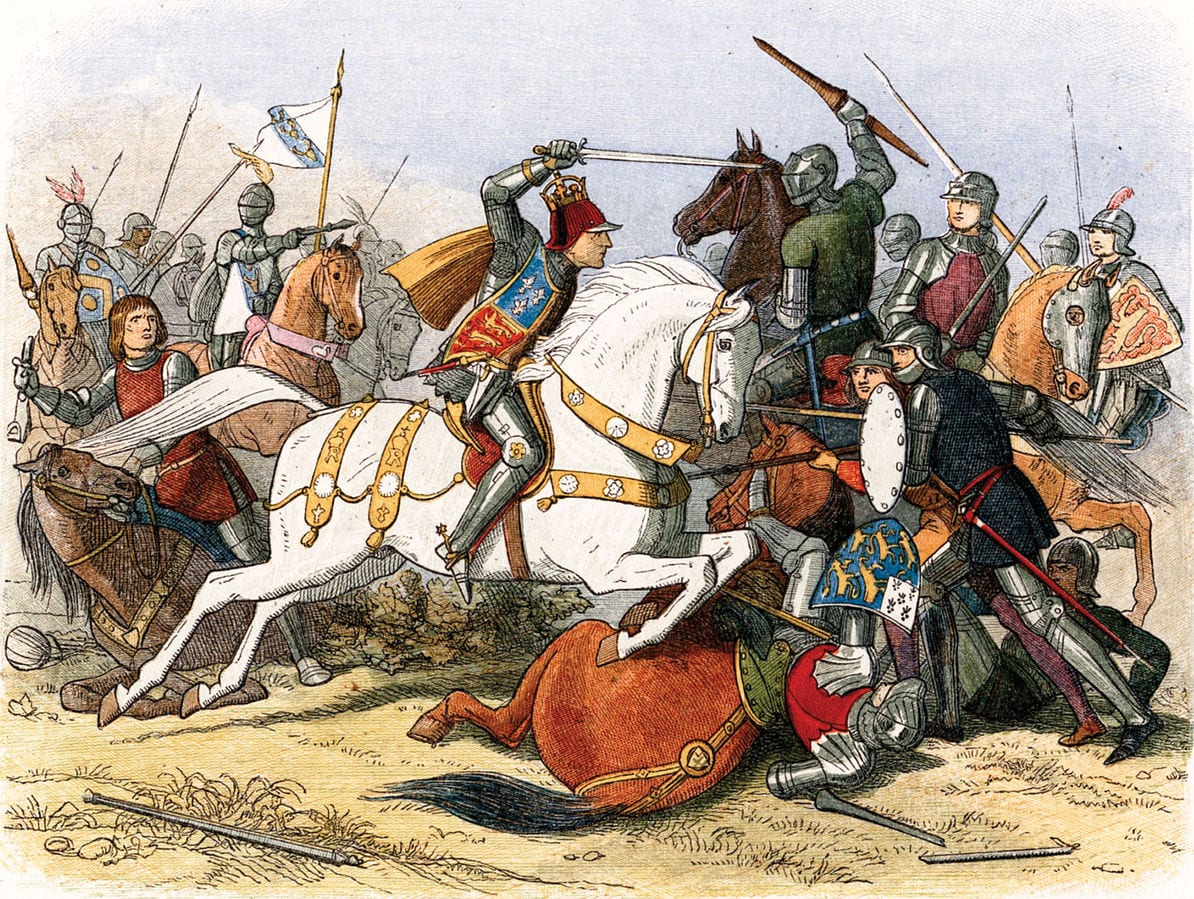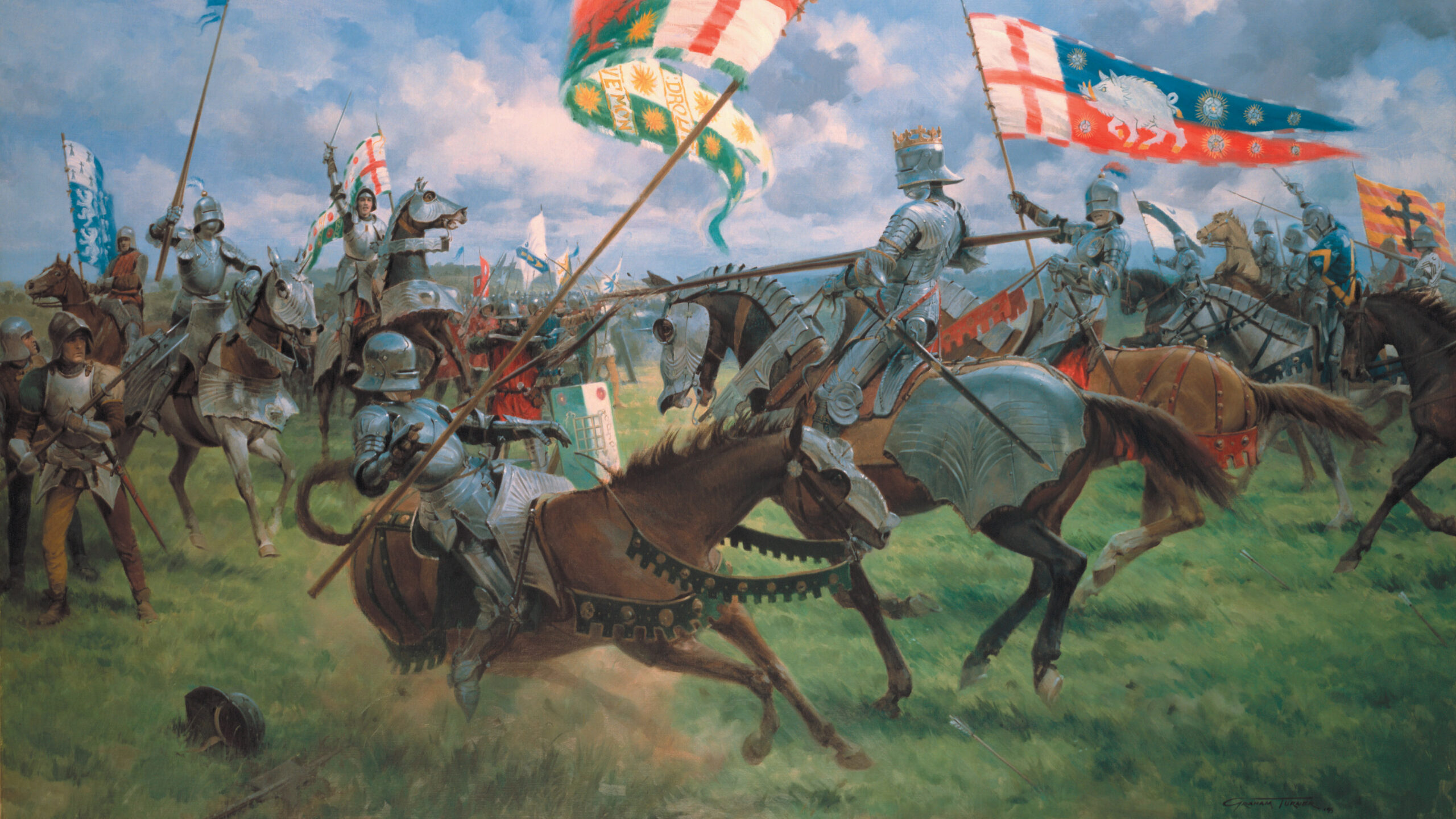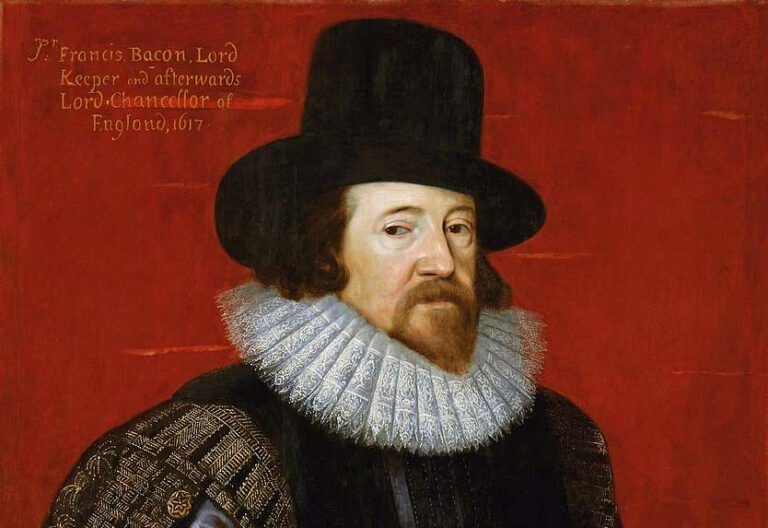The Battle of Bosworth marked a turning point in English history. It ended the Wars of the Roses.
On August 22, 1485, the forces of Richard III clashed with Henry Tudor’s army. This battle was not just about crowns but about the future of England. Richard III’s defeat and death on the battlefield brought the Tudor dynasty to power.
The reign of Henry VII began, leading to significant changes in the country. The Battle of Bosworth remains a fascinating episode, illustrating the power struggles and ambitions of the time. It’s a story of bravery, strategy, and fate that continues to captivate historians and enthusiasts alike. Understanding this battle gives us insight into the complexities of medieval politics and the making of modern Britain.

Credit: cruxnow.com
Prelude To The Battle
The Battle of Bosworth, fought on August 22, 1485, marked the end of the Wars of the Roses. This battle saw the fall of King Richard III and the rise of Henry Tudor, who became Henry VII. The events leading up to this crucial battle were a series of dramatic political moves and alliances.
Rival Claims To The Throne
At the heart of the conflict were two rival factions: the House of York and the House of Lancaster. The House of York was represented by King Richard III. He had seized the throne from his nephew, Edward V. This act created many enemies within his court. On the other side was Henry Tudor, who claimed the throne through his mother, Margaret Beaufort. She was a descendant of the House of Lancaster. Henry’s claim was weak, but it gained strength through political support.
Political Alliances And Betrayals
Many alliances were formed in the lead-up to the battle. Richard III had the support of many northern barons. However, his rule was marked by suspicion and fear. This led to several key nobles turning against him. One such betrayal was by Lord Stanley. He had promised support to Henry Tudor while publicly supporting Richard III.
Henry Tudor sought alliances to strengthen his claim. He secured the support of the French king, who provided troops and ships. Henry also gained the backing of many discontented English nobles. They saw him as a means to end Richard’s tyrannical rule.
These political maneuvers set the stage for the Battle of Bosworth. The alliances and betrayals created a volatile environment. This ensured that the battle would be decisive in determining England’s future ruler.

Credit: www.britishbattles.com
Key Figures
The Battle of Bosworth was a significant turning point in English history. This battle ended the Wars of the Roses. Key figures played crucial roles in this historical event. Let’s take a closer look at them.
Richard III
Richard III was the last king of the House of York. He was known for his courage and strategic mind. Richard III took the throne in 1483. Many considered his rule controversial. He faced many challenges, including the threat from Henry Tudor. His death in the battle marked the end of the Plantagenet dynasty.
Henry Tudor
Henry Tudor was the leader of the Lancastrian forces. He claimed the throne through his mother, Margaret Beaufort. Henry’s forces were smaller but determined. He had the support of key nobles. After winning the battle, he became Henry VII. His victory marked the start of the Tudor dynasty.
Lord Stanley
Lord Stanley, also known as Thomas Stanley, played a pivotal role. He was initially an ally of Richard III. But his loyalty was uncertain. Stanley’s forces joined Henry Tudor during the battle. This shift in allegiance was crucial. It significantly influenced the outcome of the battle.
| Figure | Role | Significance |
|---|---|---|
| Richard III | King of England | Last Plantagenet king |
| Henry Tudor | Leader of Lancastrian forces | Founder of Tudor dynasty |
| Lord Stanley | Noble and military leader | Shifted allegiance to Henry Tudor |
Each of these figures had a unique impact on the battle and its outcome. Understanding their roles helps us grasp the significance of the Battle of Bosworth.
Battlefield Location
The Battle of Bosworth, fought on 22 August 1485, took place in a rural area of Leicestershire, England. This historic clash marked the end of the Wars of the Roses, a series of conflicts between the houses of Lancaster and York. Understanding the location of the battlefield is crucial as it played a key role in shaping the outcome of the battle. The landscape, terrain, and specific positioning influenced both the strategy and the final result.
Geographical Significance
The battlefield was located near Market Bosworth in Leicestershire. This area was known for its rolling hills and open fields. These geographical features provided a natural advantage for military engagements. The hills and valleys offered strategic points for observation and movement of troops.
The Redemore Plain served as the primary battleground. Its open space allowed for large-scale troop movements. The nearby marshland also played a significant role. It created natural obstacles that could be used to trap enemy forces.
Strategic Advantages
Location was key for both armies. The Lancastrians, led by Henry Tudor, took advantage of the high ground. This position allowed them to observe the Yorkist movements clearly. It also provided a defensive advantage against attacks.
The Yorkists, under King Richard III, had their own strategic benefits. They positioned themselves to use the marshland to their advantage. This tactic aimed to funnel the enemy into a confined space.
| Strategic Points | Advantages |
|---|---|
| High Ground | Better visibility and defensive position |
| Open Fields | Facilitates large troop movements |
| Marshland | Natural barriers to trap enemy forces |
- High ground provided the Lancastrians with a clear view.
- Open fields allowed for strategic troop positioning.
- Marshland created obstacles for the Yorkist forces.
Ultimately, the battlefield location influenced the tactics and decisions of both sides. It showcased the importance of terrain in medieval warfare. Understanding these elements helps us appreciate the complexities of the Battle of Bosworth.
Tactics And Strategies
The Battle of Bosworth was a defining moment in English history. The clash between Richard III and Henry Tudor shaped the future of England. Understanding their tactics and strategies helps us grasp the significance of this event.
Richard III’s Plan
Richard III had a strong and experienced army. He planned to use his superior numbers to overwhelm Henry Tudor’s forces. Richard positioned his troops on Ambion Hill. This high ground provided a strategic advantage. His archers and artillery would rain down on the enemy. Richard also had well-trained knights and soldiers ready for close combat. He believed his loyal commanders would hold firm. Richard’s plan relied on swift, decisive action. He aimed to crush Henry’s forces quickly.
Henry Tudor’s Approach
Henry Tudor had fewer troops but relied on strategy. He positioned his forces carefully to counter Richard’s advantages. Henry knew he needed to avoid direct confrontation. His focus was on outmaneuvering Richard’s army. Henry’s troops were disciplined and motivated. He used the terrain to his advantage. Marshy ground and wooded areas provided cover. Henry also secured alliances with key nobles. Their support bolstered his numbers. Henry’s approach was cautious yet calculated. He aimed to exploit any weakness in Richard’s plan.
The Battle Unfolds
The Battle of Bosworth, fought on 22 August 1485, was a turning point in English history. This battle marked the end of the Wars of the Roses, a series of conflicts between the houses of Lancaster and York. As the battle unfolded, key events shaped its outcome. Here, we explore the initial skirmishes and the decisive moments that determined the victor.
Initial Skirmishes
The battle began early in the morning. Henry Tudor’s forces faced King Richard III’s army. The initial skirmishes set the tone for the day. Both sides tested each other’s strength. Archers launched volleys of arrows. Foot soldiers engaged in close combat. These early clashes were intense and bloody. Each side aimed to gain an early advantage.
Decisive Moments
The battle’s outcome hinged on several decisive moments. First, Lord Stanley’s forces joined Henry Tudor. This move shifted the balance of power. King Richard III saw an opportunity. He charged directly at Henry Tudor, aiming to kill him. This bold move nearly succeeded. Yet, Richard was surrounded and killed. His death marked the end of the battle. Henry Tudor emerged victorious.
| Event | Impact |
|---|---|
| Stanley’s Support | Shifted power to Henry Tudor |
| Richard’s Charge | Almost turned the tide |
| Richard’s Death | Ended the battle |
These key events shaped the battle’s outcome. The Battle of Bosworth was a decisive moment in English history. It ended the reign of the Plantagenets. It ushered in the Tudor dynasty. Henry Tudor became King Henry VII. His victory marked the start of a new era.

Credit: warfarehistorynetwork.com
Outcome And Immediate Aftermath
The Battle of Bosworth ended Richard III’s reign and marked the rise of the Tudor dynasty. Henry VII became the new king, leading to significant changes in English politics. The immediate aftermath saw a shift in power and the beginning of a new era.
The Battle of Bosworth ended the Wars of the Roses. It was a turning point in English history. The battle’s outcome changed the course of the kingdom. Let’s explore the events that followed the battle.
Richard III’s Death
Richard III died in the battle. He fought bravely but was outnumbered. His death marked the end of the Plantagenet dynasty. His body was found on the battlefield. It showed signs of multiple wounds. His death was a significant moment in English history.
Henry Tudor’s Victory
Henry Tudor claimed victory. He became King Henry VII. His victory started the Tudor dynasty. This brought stability to England. Henry’s reign marked the beginning of a new era. He married Elizabeth of York to unite the warring factions. This marriage helped to strengthen his position as king.
Impact On The Monarchy
The Battle of Bosworth ended King Richard III’s reign. This marked the rise of the Tudor dynasty. This shift changed the monarchy’s future direction.
The Battle of Bosworth changed English history forever. It marked a significant shift in power. The impact on the monarchy was profound and lasting. The battle ended one royal dynasty and began another. Let’s explore these monumental changes.
End Of The Plantagenet Dynasty
The Plantagenet Dynasty ruled England for over 300 years. Their reign ended abruptly at Bosworth. King Richard III, the last Plantagenet king, died in this battle. His death marked the fall of a long-standing lineage. The Plantagenets left a rich yet tumultuous legacy. Their fall created a power vacuum in the monarchy.
Rise Of The Tudors
Henry Tudor emerged victorious at Bosworth. He became King Henry VII. This victory began the Tudor Dynasty. The Tudors brought stability to England. They ruled for over a century. Their reign saw significant cultural and political changes. The Tudor era is one of the most famous in English history. It shaped the future of the English monarchy in many ways.
Long-term Consequences
The Battle of Bosworth was one of the most significant battles in English history. Its impact stretched far beyond the battlefield. The long-term consequences reshaped governance, culture, and society in England. The ripples of this event shaped the nation’s future direction.
Changes In Governance
Following the Battle of Bosworth, Henry VII ascended to the throne. His reign marked the beginning of the Tudor dynasty. This change brought stability to a country torn by civil wars. Henry’s rule centralized power and reduced the influence of the nobility. This shift in governance laid the groundwork for modern England’s political structure.
Henry VII also made significant changes to the legal system. He established the Court of Star Chamber to ensure justice and curb the power of the nobles. This court dealt with cases of corruption and abuse of power. It also protected the rights of the common people. These legal reforms were crucial in building a fairer society.
Cultural And Social Shifts
The Battle of Bosworth also led to notable cultural and social shifts. The end of the Wars of the Roses brought a sense of relief and hope. People began to focus on rebuilding their lives and communities. This period saw a rise in the arts and education. The Tudor era is often remembered for its cultural achievements.
Under Henry VII’s rule, the influence of the church began to wane. People started questioning the church’s authority. This change laid the foundation for the English Reformation. This movement significantly altered the religious landscape of England.
The victory at Bosworth also changed social hierarchies. The new king rewarded loyal supporters with titles and lands. This redistribution of power and wealth created a new class of influential families. These families played key roles in the country’s future development.
The Battle of Bosworth was a turning point in English history. Its long-term consequences are still felt today. Changes in governance, culture, and society shaped the nation’s identity. The Tudor era laid the foundation for modern England.
FAQs
What Was The Battle Of Bosworth?
The Battle of Bosworth was a decisive battle in the Wars of the Roses. It took place on August 22, 1485. It marked the end of the Plantagenet dynasty and the rise of the Tudors.
Who Fought In The Battle Of Bosworth?
The Battle of Bosworth was fought between the forces of Richard III and Henry Tudor. Richard III led the Yorkists, while Henry Tudor led the Lancastrians. Henry’s victory led to his coronation as Henry VII.
Why Is The Battle Of Bosworth Important?
The Battle of Bosworth ended the Wars of the Roses. It marked the start of the Tudor dynasty. Henry VII’s victory brought stability to England after years of civil war.
Where Did The Battle Of Bosworth Take Place?
The Battle of Bosworth took place near Market Bosworth in Leicestershire, England. The exact location is now a popular historical site. It attracts many visitors interested in English history.
Conclusion
The Battle of Bosworth changed English history forever. This clash ended the Wars of the Roses. Richard III fell, and Henry Tudor rose. The Tudor dynasty began its reign. Lessons from this battle still echo today. Power shifts shaped the future.
Historians study its impacts with great interest. Visit Bosworth Field for a true sense of history. Feel the past come alive.








